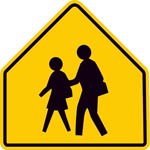Children, Youth, Families, and Schools, Nebraska Center for Research on
Document Type
Article
Date of this Version
2010
Citation
Hanna, J., Hinrichs, K., Mahar, C., DeFrain, J., & Durden, T. (2010, January). Infants Develop Language Naturally. NebGuide G1984. University of Nebraska–Lincoln Extension, Institute of Agriculture and Natural Resources.
Abstract
StoryQUEST’s Vision: High-quality early relationships and experiences throughout their daily routines provide each infant and toddler with the tools and skills to build a strong foundation for future school readiness. Families, caregivers, and communities as a whole collaborate to enable all children to become highly competent in language and literacy. This series was developed as part of a national research project — StoryQUEST — through the California Institute on Human Services, Sonoma State University.
First in a series of nine, this NebGuide discusses the importance of speaking to and engaging infants in communication.
Did you know?
• Infants are mastering language simply by listening to us talk.
• Babies begin learning about language in the first months of life. They can hear the difference between the consonants and vowels used in any language.
• By the age of 6 months, infants have trained their ears to the sounds of their native language, and they have learned to distinguish these sounds before actually learning words.
• Baby talk, or “Parentese,” makes it easier for the baby to learn a language because the sounds are greatly exaggerated.



Comments
Copyright University of Nebraska 2010